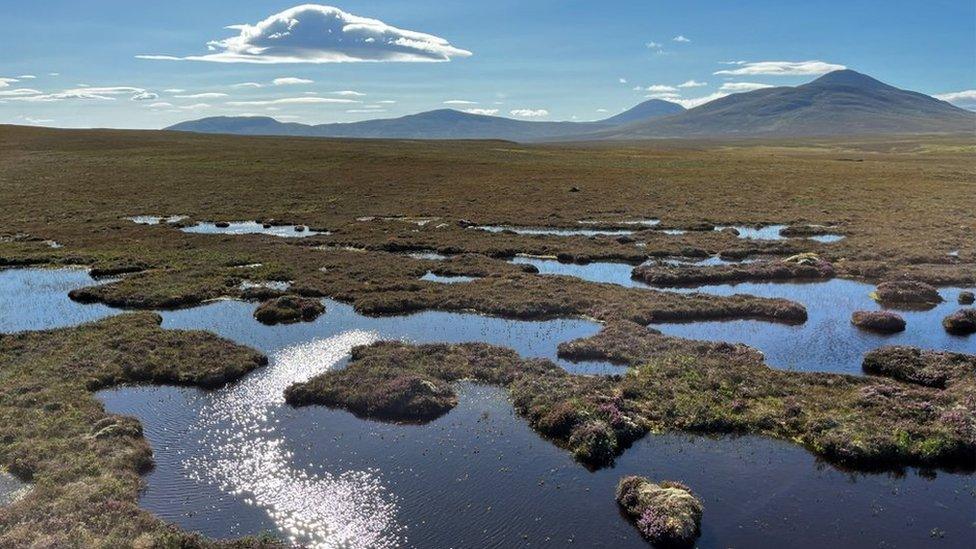How could peatlands fall victim to climate change?
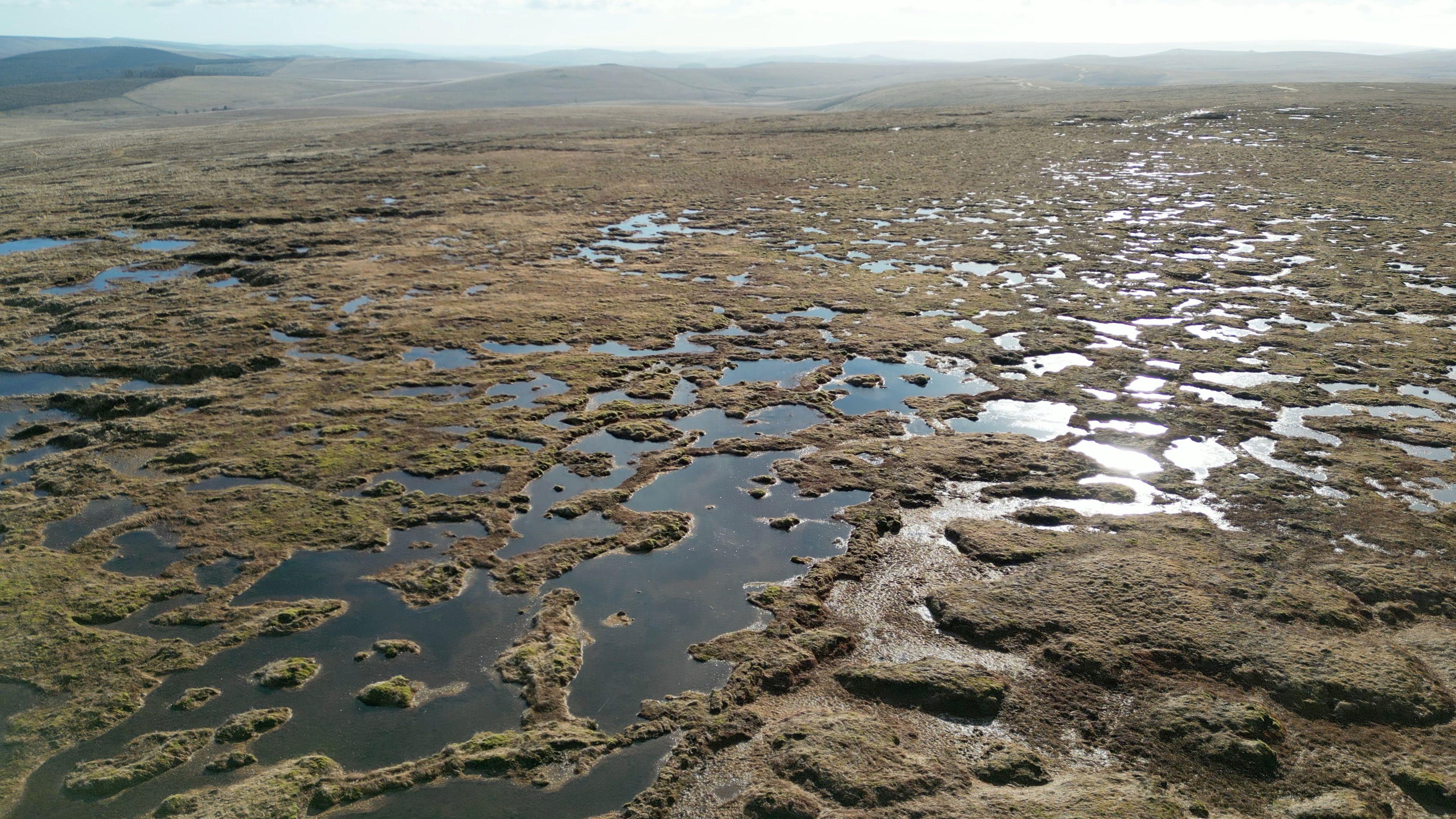
An area of peatland on Dartmoor restored by the South West Peatland Partnership
- Published
Healthy peat is the country's biggest carbon store but when damaged it releases planet-warming greenhouse gases back into the atmosphere. New research shows instead of being part of the answer to climate change, peat bogs could become a victim of it.
Why are peatlands under threat?
Peat is formed over thousands of years from partially decayed plants in waterlogged conditions. Its ability to absorb and store carbon dioxide means peatlands are key to the UK's ambition of reaching net-zero emissions by 2050.
However, our peatlands are under a two-pronged attack - from the past and from the future.
Historic damage caused by human activities like farming, forestry and peat cutting has left 87% of England's peatlands degraded and dried out, emitting tonnes of carbon dioxide into the atmosphere each year, according to the Department of Environment, Food and Rural Affairs, external (Defra).
On Dartmoor, the University of Exeter estimates just 1% of its deep peat is healthy, peat-forming bog.
Efforts to restore this vital natural resource are under way, including in Exmoor, Dartmoor and Cornwall, but scientists are warning climate change could make that difficult.
"Under even the least severe climate change scenario, most peatlands move outside of their preferred climate," lead researcher, ecology professor Dan Bebber says.
"Too hot, too dry, that's the prediction for the future."
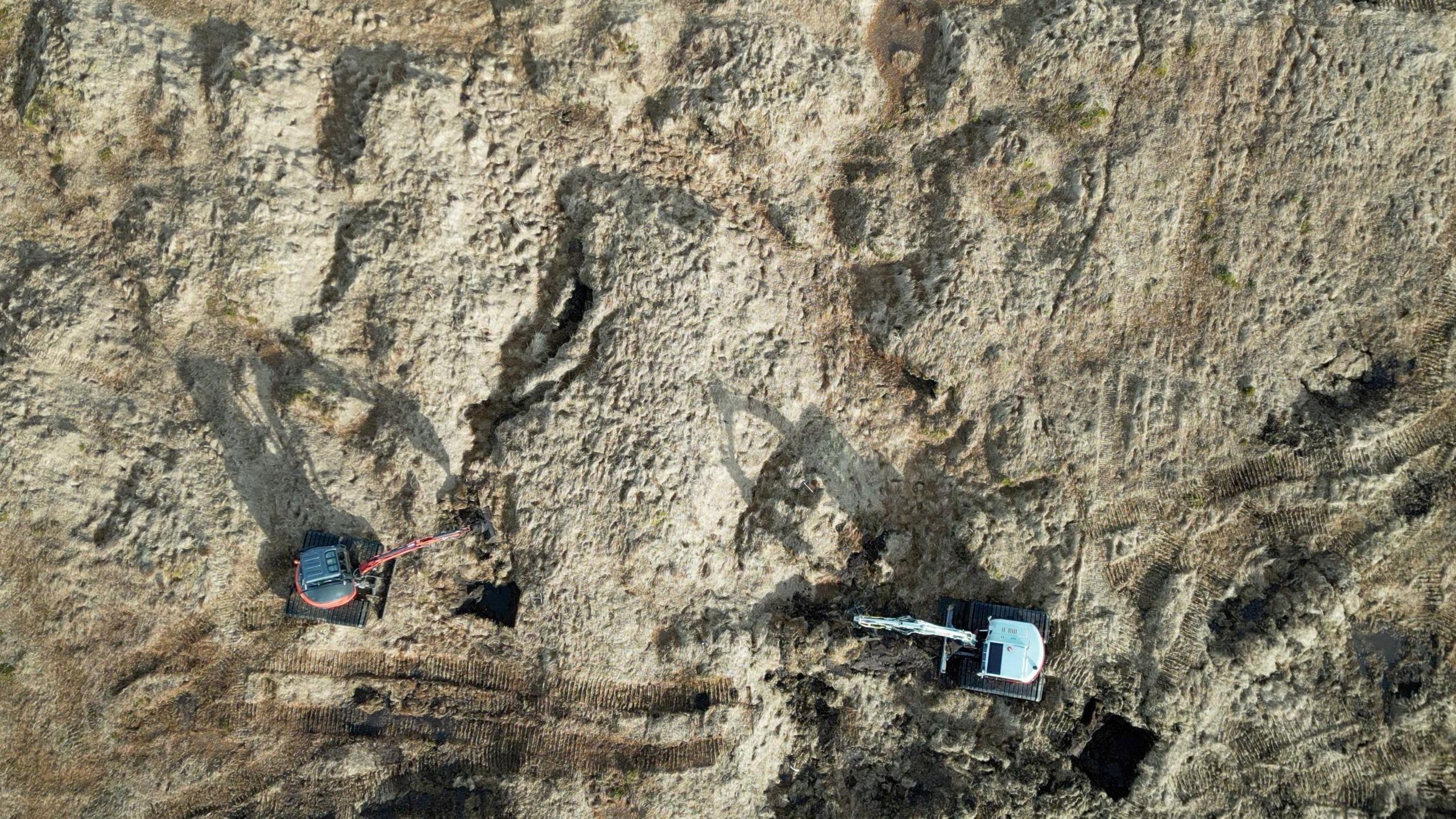
Two diggers re-wetting peatland at Cranmere Pool on Dartmoor by blocking the man-made and eroded drainage features
What areas are under threat?
Prof Bebber worked with scientists from three other universities to compare the ideal climatic conditions for healthy peat-forming bog in the UK with three climate change projections for low, moderate and high emissions scenarios.
The research focusses on Dartmoor, the Peak District, Snowdonia and the Flow Country in north-east Scotland, the newly designated Unesco World Heritage site.
However, Prof Bebber says the results apply to all of the UK.
They conclude that even under the lowest emissions scenario, which they say "would require very rapid decarbonisation", the decrease in the probability of peat presence is "severe".

Healthy peatland is a natural carbon sink
The study adds Dartmoor is projected to lose 68% to 100% of its suitable area for peat formation by 2061 to 2080.
Under the highest emissions scenario, they say the climate that peat is likely to be found in "will have virtually disappeared" by that timeframe "for all of our case study areas except Snowdonia".
"What's going to happen is the climate's going to become warmer, so the summers will get a lot hotter and generally there'll be less rainfall throughout the year," Prof Bebber says.
"Those are conditions that are not particularly great for peat."
What does this mean for peatlands?
The UK Centre for Ecology & Hydrology says peatlands occupy about 12% of the UK's land area, storing an estimated 3.2 billion tonnes of carbon.
That is more than the combined forests of Britain, France and Germany, according to the Office for National Statistics.
The study says more research is needed on what might happen to these peatlands once they are outside their preferred climate.
In the paper, the scientists call for more restoration of peatlands across the UK "to limit the impact of future drought conditions", but they add "being outside the current bioclimatic envelope may make full restoration challenging".
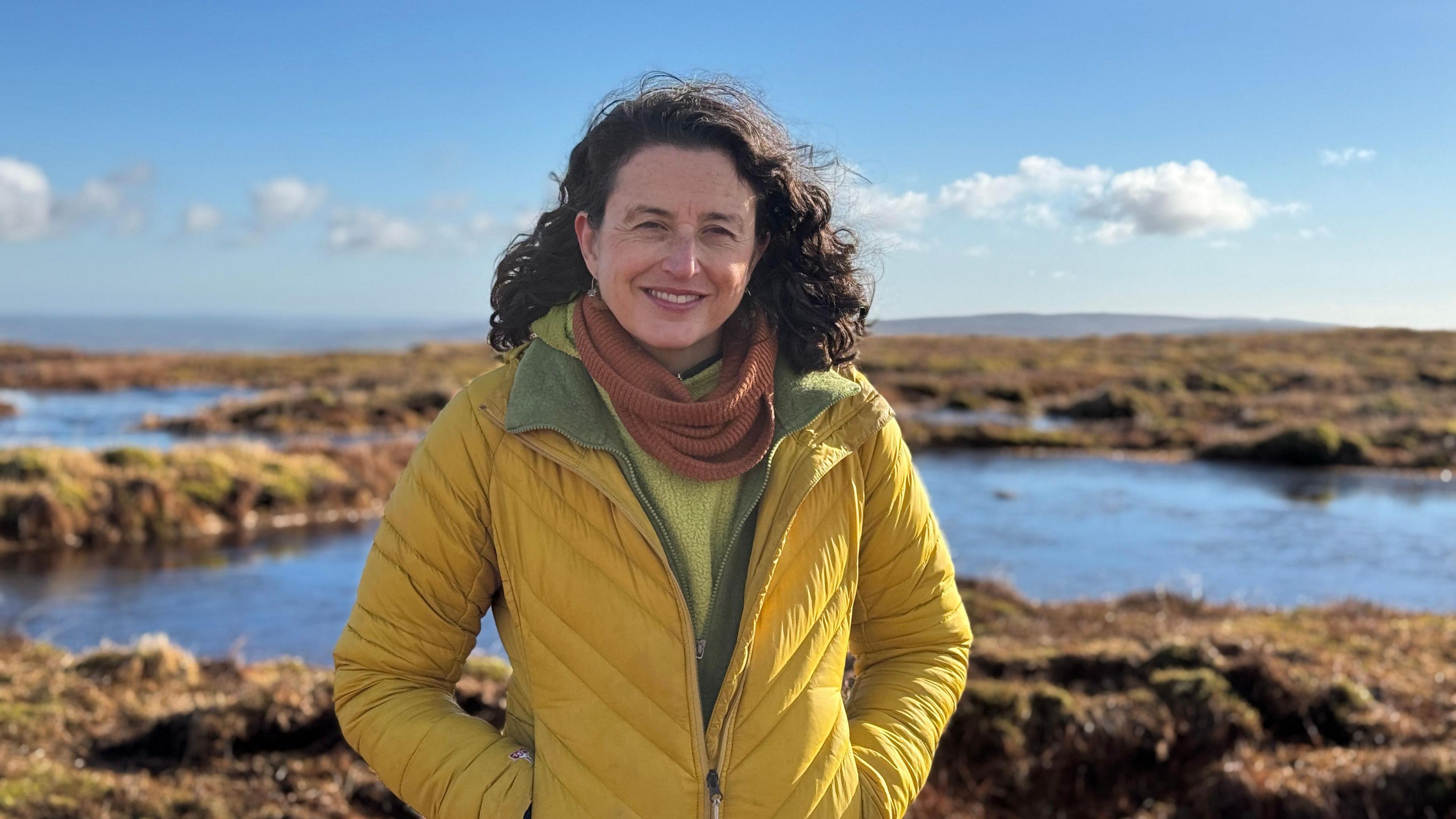
Angela Gallego-Sala says peatlands are fascinating and resilient
Angela Gallego-Sala, a professor of biochemistry who co-wrote the research, says peatlands are likely to become "stressed" but they are resilient systems that might be able to adapt.
"We don't know what might happen [but] if we restore them, we know that we are giving them the best chance of persisting in time... We know that if we do nothing, these systems that are very dry, will definitely end up losing a lot of carbon into the atmosphere," she says.

Sphagnum moss, which is a vital plant in the formation of peat bogs, is able to hold 20 times its own weight in water
Is there a solution?
Restoration work is being carried out all over the country.
In England, which has 1.4 million hectares of peatlands, Natural England and Defra is currently funding 23 projects through the Nature for Climate Peatland Grant Scheme, with an ambition to restore hundreds of thousands of hectares of peatlands.
The South West Peat Partnership (SWPP), one group which has received funding, is aiming to restore more than 2,600 hectares of damaged peatland across Exmoor, Dartmoor and Cornwall.
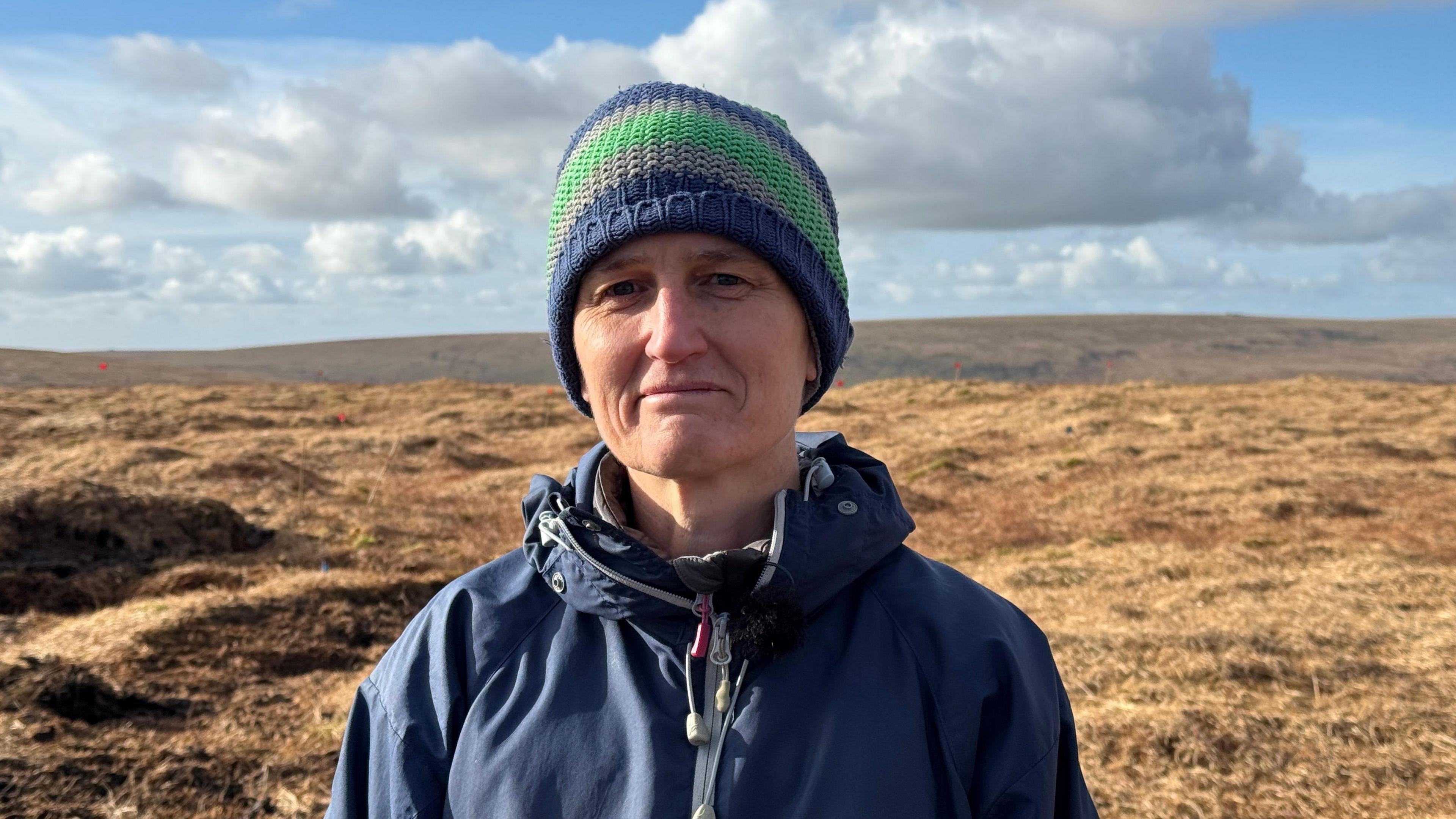
Morag Angus says peatlands in the South West are in a "degrading" state
To be healthy peat bogs must be wet.
SWPP teams have been raising the water table in areas of drained and degraded peatland, by blocking the drainage gullies which are both man-made and caused by erosion.
Project officer George Kohler says climate change is already having an impact on the work.
He says: "We're building [the blocks] a bit higher and a bit sturdier so we can withstand that rain as well as hold as much water as possible and that hopefully will just try and mitigate against any drying that we might face with climate change."
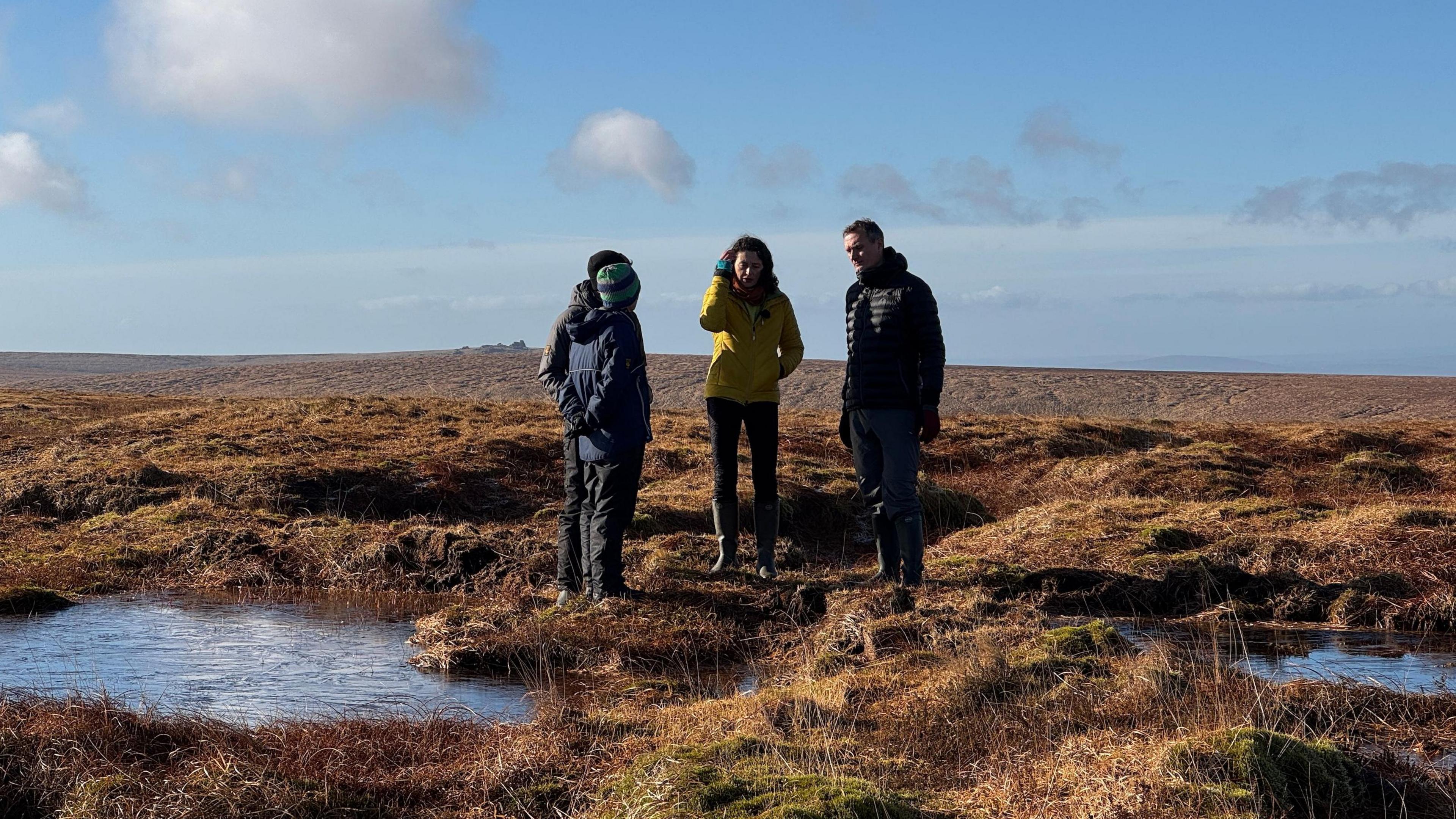
An area of restored peatland at Hangingstone Hill on Dartmoor where peat has been re-wetted
Is enough being done?
Restoration manager Morag Angus says the new research, external shows restoration needs to happen faster and "at a much bigger scale" to get them in the best possible condition to face the coming threat.
She says peatlands in the South West are "in a degrading state" and are being lost.
"When you look at a river, if you're stood on Exmoor, Dartmoor, or Bodmin moor... you'll see that it's a brown colour, like tea colour.
"That's the peat that's been lost from the top of the moorlands entering into those rivers."
SWPP's projects have funding until 2030 – but they say more cash and support is needed.
"We've got this huge responsibility for us as a society and locally in the South West to do what we can do to restore those peatlands," Ms Angus says.
"So that we can... protect these peatlands and make them work better for now and for future generations in order to combat that climate change, biodiversity crisis that we've got."

Special low-impact diggers are used to carry out peatland restoration on Dartmoor
A Defra spokesperson says England's peatlands are of "huge international importance".
"Healthy peatlands provide multiple environmental benefits; they store carbon, optimise biodiversity, are more resilient to wildfire and can help to alleviate flooding and improve water quality," they say.
"It is vital that we protect these sites for future generations and that's why this government is investing £400m to protect and restore nature, including for our peatlands."
Follow BBC Cornwall on X, external, Facebook, external and Instagram, external. Follow BBC Devon on X, external, Facebook, external and Instagram, external. Send your story ideas to spotlight@bbc.co.uk, external.
- Published5 March 2024
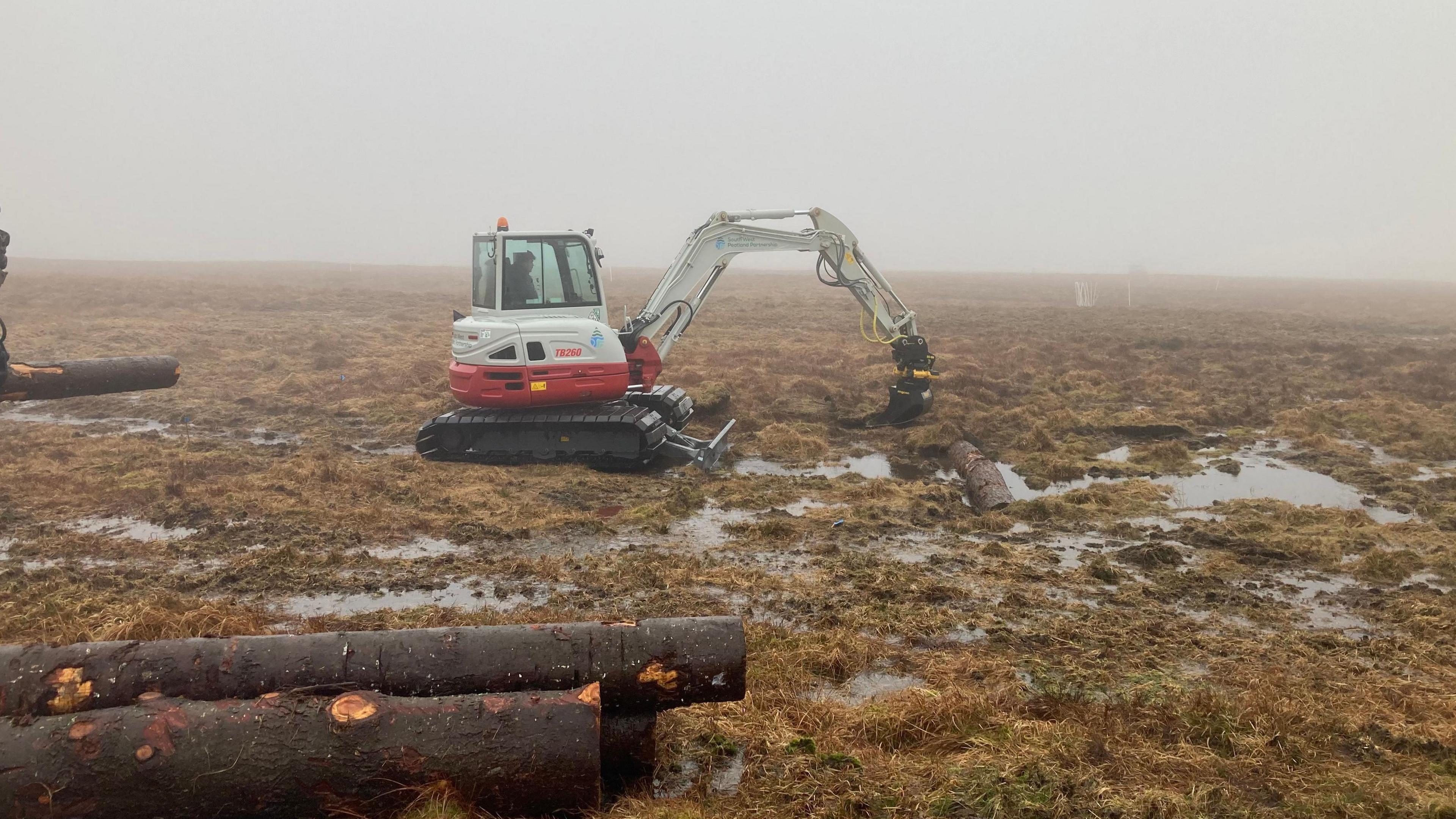
- Published5 April 2024
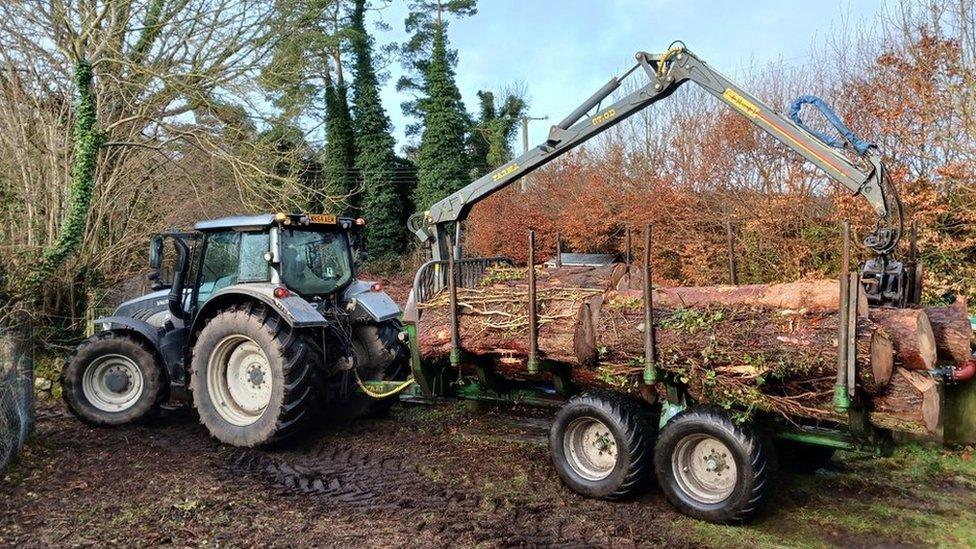
- Published26 July 2024

- Published7 September 2023
